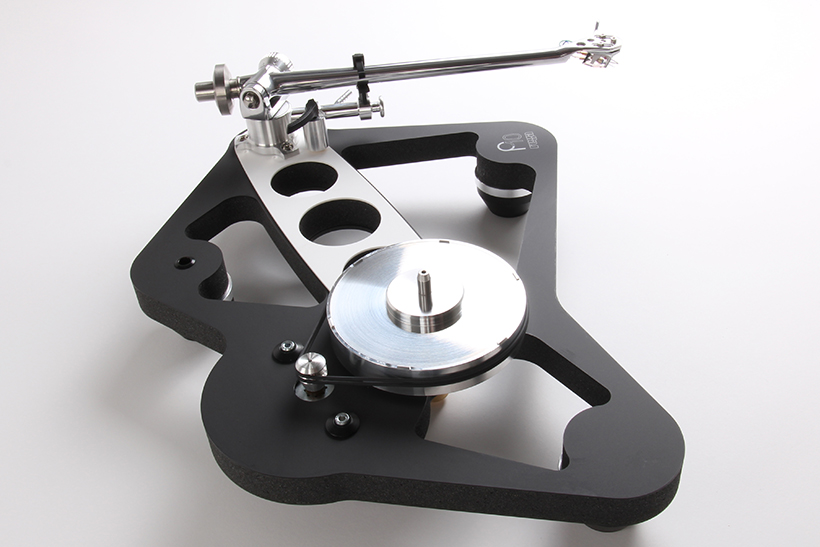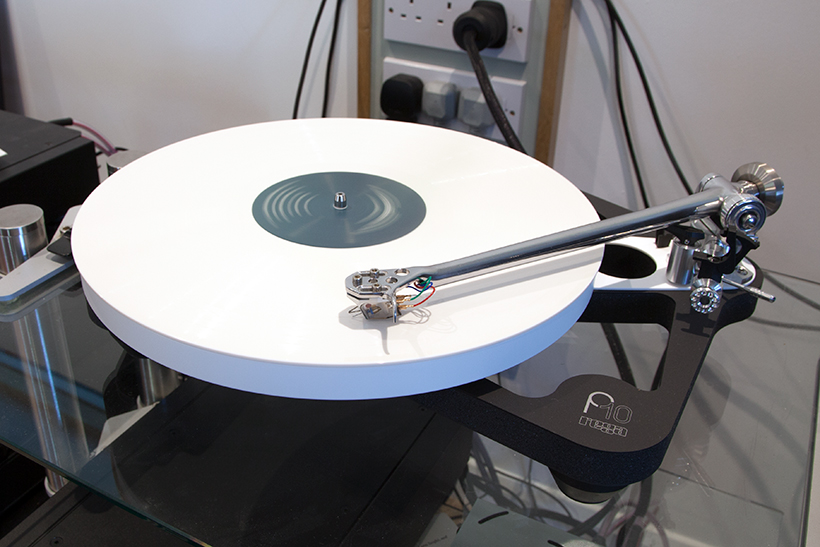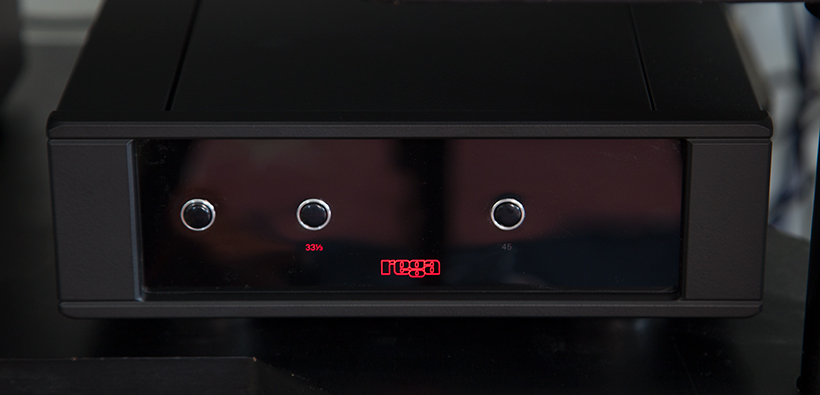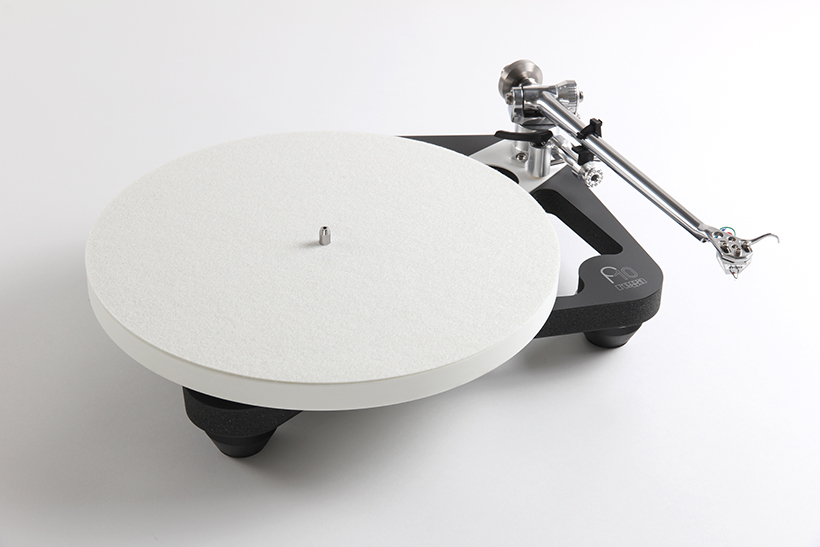Rega Planar 10 turntable and arm
Five years before the Rega Planar 10 Rega launched the RP10, a turntable based on the innovations developed for Rega’s cost no object Naiad. The RP10 moved the goal posts, it redefined what a turntable that cost less than a car could do and I have been enjoying my vinyl on one ever since its launch. Earlier this year Rega released the Planar 8 which replaced the RP8 and once more established itself as the best turntable in its category by quite some margin. The Planar 10 is essentially a combination of what was done for the Planar 8, the best bits of the RP10 and some significant refinements that mean this latest Rega is ready to take on the biggest, shiniest high end turntables on the market.
The bits that it carries over from the RP10 are the white ceramic platter with peripheral weighting (albeit the design has been refined for improved coupling to the sub platter) and the power supply, the latter is now in an all metal case that matches Rega’s top electronic components but the guts remain the same. The key changes are that the plinth is even smaller thanks to the use of Tancast 8 in the foam core, this means reduced weight and increased rigidity, and the bracing between arm base and platter bearing is ceramic on the top and phenolic underneath for an even stiffer connection between these two reference points. The bearing has been completely redesigned for lower mass and reduced friction with the housing made out of aluminium and brass and surrounding a hardened tool steel spindle sitting on a thrust pad of the same material.

As ever with Rega the motor is a 24V synchronous type, here it is mounted underneath the plinth using an isolation system taken directly from the Naiad yet which is also designed for high rigidity. The external power supply is tuned to its partnering motor prior to installation to minimise vibration. Drive to the one piece aluminium sub platter is via twin belts made of a bespoke rubber on machines built by Rega for maximum consistency and accuracy. They take belts very seriously. In fact they take the whole business of turntables seriously, you can tell as much from the title of the book Rega published a couple of years ago, A Vibration Measuring Machine, where founder Roy Gandy explains that the only vibration you want in a turntable is the stylus in the groove. In order to be able to measure or read that accurately you need to minimise all other vibrations in the turntable and arm and avoid mechanical interfaces that create energy spikes. This is why they went from arm bases clamped with a large nut to the three point fixing seen on all contemporary Rega tonearms, clamping the plinth causes extra vibration at a particular frequency and this is transmitted to the stylus/vinyl interface, ditto record clamps. Low level vibration of an even character is much less of an issue than resonant peaks.
The RB3000 tonearm looks very similar to the RB2000 of the RP10 but has a more attractive bias knob on the outside. On the inside there is a lower mass bias assembly and more precise engineering which is said to result in a “micron perfect bearing fit”. It remains a nine inch aluminium casting with integral headshell and finger lift that’s polished to a chrome like shine. The aluminium arm lift has a beautifully damped action and the bias adjustment is a simple case of pulling the knob out as far as you can before the stylus ceases to track properly. The further out it is the less bias is applied. The arm has a small counterweight and spring downforce with a basic scale next to the adjuster, you don’t have to have a gauge to measure downforce but it makes life easier.

Launched at the same time as the Rega Planar 10 and available with it at a discounted price is the Apheta 3 moving coil cartridge. This is a low mass cartridge that’s very similar to the Apheta 2 with a high power neo magnet in a one piece aluminium body and an aluminium cantilever. Where it differs is in the stylus tip which is a Fine Line type that’s slotted through the cantilever for a very strong mechanical bond, it’s the same system as Rega uses for the Aphelion range topping MC.
Rega Planar 10 sound quality
My listening was done with the P10 connected to a Tom Evans Groove SRX phono stage, with the impedance set a little higher than the 100 ohms recommended for both the Rega cartridges used. The result was very much in the less is more camp, less turntable character equalling more musical detail. In many ways the Rega Planar 10 doesn’t sound like a turntable in the usual sense, it is devoid of the ‘warmth’ that many associate with vinyl but full of the music that was recorded in the studio or concert hall and mastered onto the acetate before being turned into stampers. In other words it sounds more like the original recording than record players usually do. If you imagine the original recording as a planed piece of highly figured hardwood most turntables add a slight blurring of the detail and a layer or two of lacquer to the result, which can sound very nice indeed but it does mask the fine detail. The Rega Planar 10 doesn’t do this, it gives you the unvarnished beauty of the original material. It sounds like master tape resolution and means that the differences between recordings is far greater than usual, the better ones sound astonishing the lesser ones rather flat by comparison. I have never used a turntable that reveals so much about the quality of the recording/mastering/pressing of vinyl record and with the more compressed examples this can be a little frustrating. The quality of the composition and the music is clear but there is a feeling that the medium is letting the performance down.

What you always get regardless of material is effortless speed, this is most obvious in the bass which has long been a turntable weak point, here the low notes are as precise and well defined as the mids and highs. This is particularly obvious where there is a strong lead instrument playing over a rhythm section such as in ZZ Top’s Jesus Just Left Chicago (Tres Hombres, Warner Bros). Usually you get a sense of what the bass guitar is doing but your attention is grabbed by the voice and guitar, here you can hear exactly what Dusty Hill is playing and it syncs so perfectly with the drums that it’s hard to not get carried away. Ultimately of course the lead is where the real action happens and that’s what talks to your heart and soul, as was the case with La Grange from the same album, a track that brought tears to my eyes like never before. The P10 adds no romance of its own to the music but if it’s in the performance you know all about it. The same thing happened with Stevie Wonder’s Pastime Paradise (Songs in the Key of Life, Motown) where the build up to the choir at the end was so powerful I was totally blown away. With a turntable of this calibre the voice of a higher being is clearly audible on this track.

The best results with the Rega Planar 10 were achieved with the Aphelion cartridge I use as a reference but the Apheta 3 was also extremely revealing. It’s a little cooler in balance, possibly because it’s less run-in, but shows you what’s going on in the mix with consummate ease. Urging you to turn up the level because the distortions usually associated with vinyl replay seem to have been all but eliminated. The result is a turntable that has the calm stateliness of a big SME and the nimbleness of a Gran Prix Audio. Which means that the tension of Leifur James’ A Louder Silence are so intense that the climaxes are not quite enough, they fizzle out a little but the sound of this album is beautiful nonetheless. The separation of instruments and voices is truly remarkable, in pieces where you thought there might be two guitars for instance the situation is fully clarified, each instrument in its own space with its own distinct character. This is partly because imaging is so strong, with a decent cut like Binker & Moses Alive in the East (Gearbox Records) it’s like being there in the club. There is so much depth, power and energy it’s uncanny. The track ‘Children of the Ultrablacks’ sounds incredible, with the full power of the band delivered in totally coherent fashion, so much so that what can sometimes sound like an onslaught becomes musical and you are astonished at the stamina of the musicians. You can also hear the tube amplification used in the recording, this gives you the space and the vitality but also softens the hardness of brass on microphone.
Gillian Welch’s Harrow and the Harvest is goosebump raising realism writ large, the vocal harmonies are to die for, Welch and partner Dave Rawlins went to town cutting this album to vinyl and it pays off in spades, all they have to do now is give Time (the Revelator) the same treatment. This is the sort of turntable that will have you not only hoarding vinyl but trying different pressings in the search for the best sounding example, I tried this with my four strong collection of JJ Cale’s Naturally (A&M) and found that the oldest (US) pressing sounded better than a rich but overly smooth audiophile reissue and a Philips example, which was a bit lean.

Rega Planar 10 verdict
I have not yet been able to stop playing old favourites on the Rega Planar 10 and don’t expect the urge to subside any time soon, this is a truly exceptional turntable with the ability to open up any recording and show you exactly what was going on at the time and place it was made. There is a better turntable and arm combination out there it’s called the Rega Naiad, but last time I looked it cost £25,000 and was in very short supply. There may be others of course, but certainly not at anywhere near the asking price here, the Rega Planar 10 is a bona fide ultra-fi bargain.


